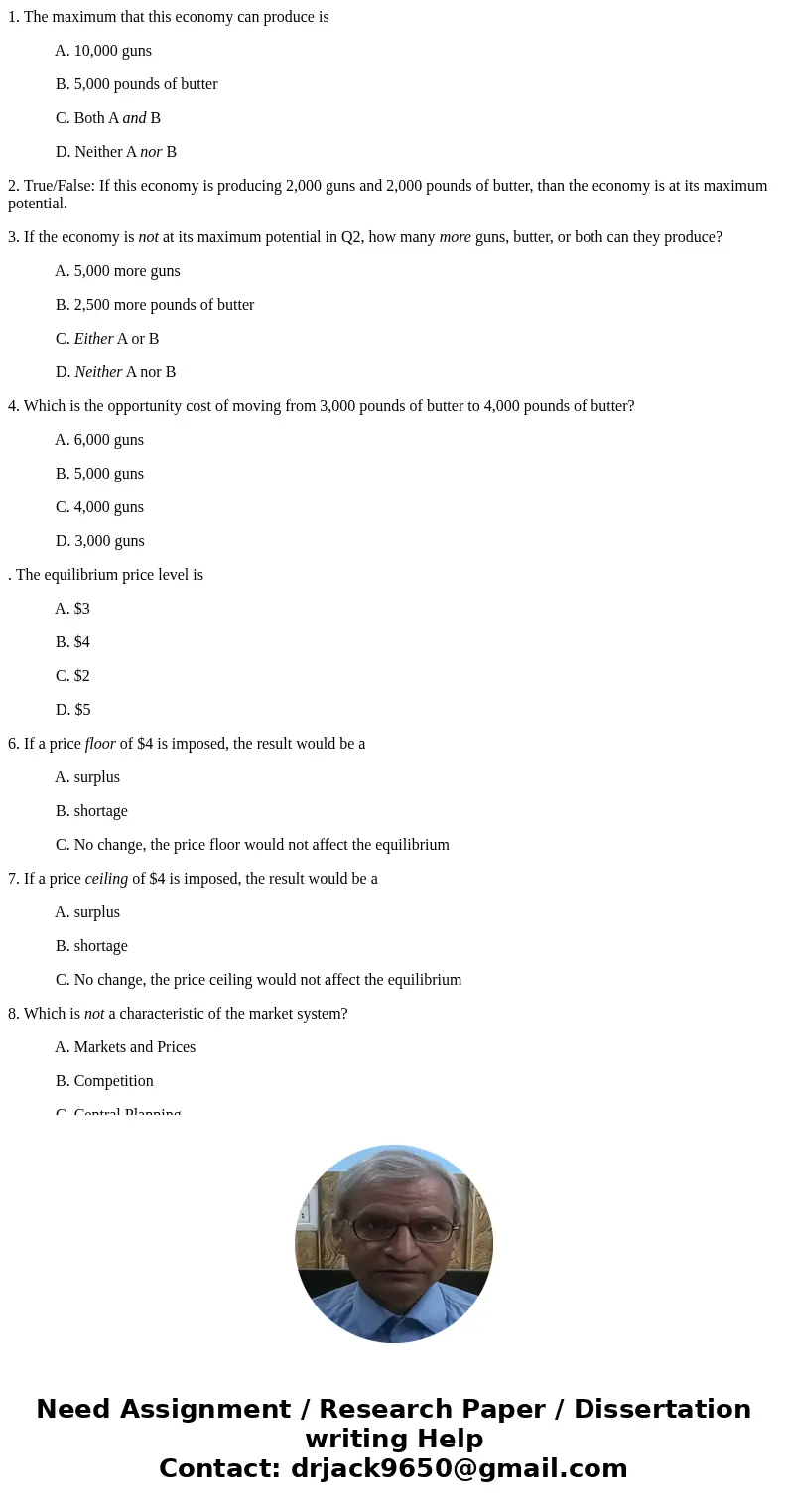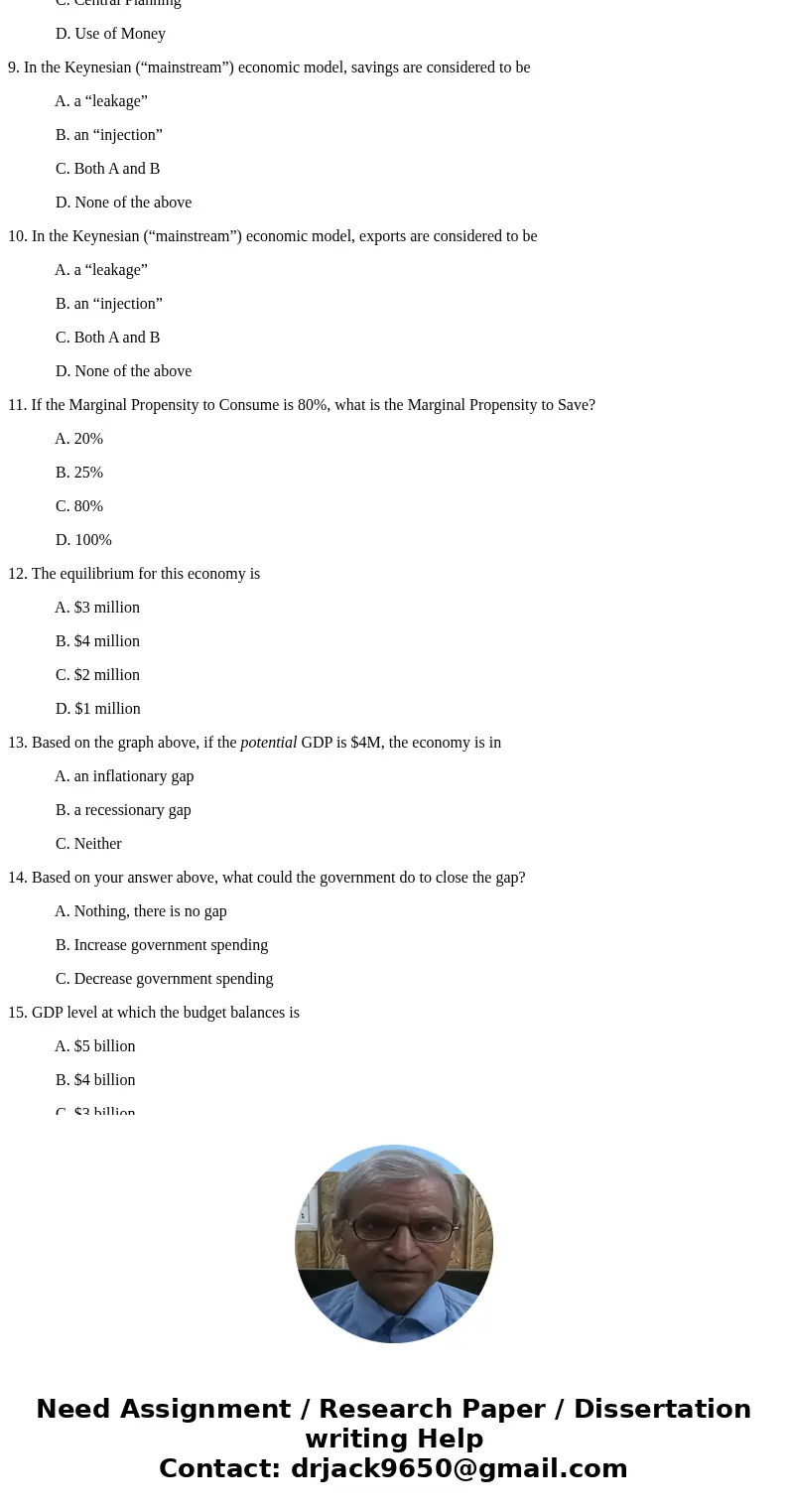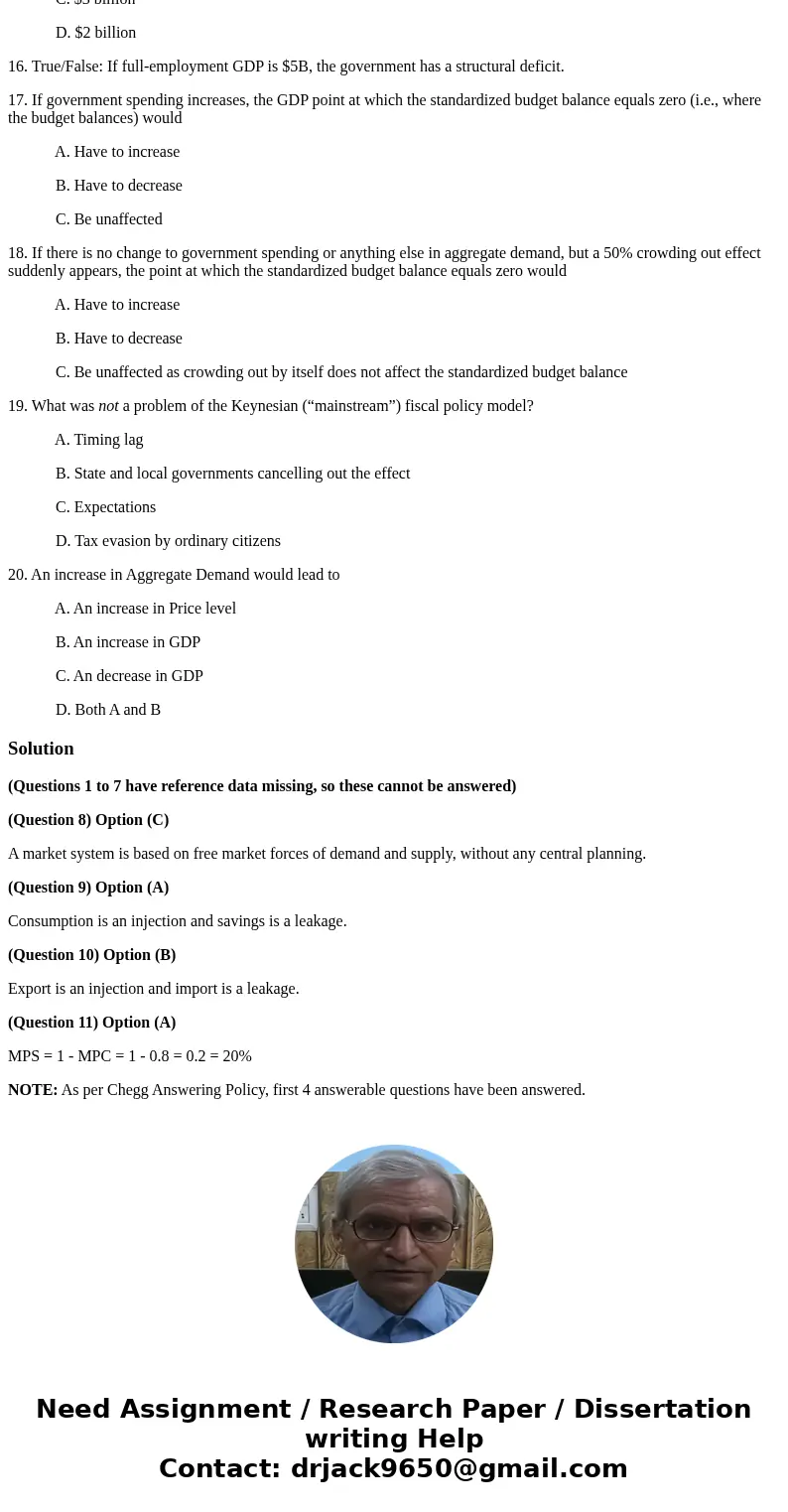1 The maximum that this economy can produce is A 10000 guns
1. The maximum that this economy can produce is
A. 10,000 guns
B. 5,000 pounds of butter
C. Both A and B
D. Neither A nor B
2. True/False: If this economy is producing 2,000 guns and 2,000 pounds of butter, than the economy is at its maximum potential.
3. If the economy is not at its maximum potential in Q2, how many more guns, butter, or both can they produce?
A. 5,000 more guns
B. 2,500 more pounds of butter
C. Either A or B
D. Neither A nor B
4. Which is the opportunity cost of moving from 3,000 pounds of butter to 4,000 pounds of butter?
A. 6,000 guns
B. 5,000 guns
C. 4,000 guns
D. 3,000 guns
. The equilibrium price level is
A. $3
B. $4
C. $2
D. $5
6. If a price floor of $4 is imposed, the result would be a
A. surplus
B. shortage
C. No change, the price floor would not affect the equilibrium
7. If a price ceiling of $4 is imposed, the result would be a
A. surplus
B. shortage
C. No change, the price ceiling would not affect the equilibrium
8. Which is not a characteristic of the market system?
A. Markets and Prices
B. Competition
C. Central Planning
D. Use of Money
9. In the Keynesian (“mainstream”) economic model, savings are considered to be
A. a “leakage”
B. an “injection”
C. Both A and B
D. None of the above
10. In the Keynesian (“mainstream”) economic model, exports are considered to be
A. a “leakage”
B. an “injection”
C. Both A and B
D. None of the above
11. If the Marginal Propensity to Consume is 80%, what is the Marginal Propensity to Save?
A. 20%
B. 25%
C. 80%
D. 100%
12. The equilibrium for this economy is
A. $3 million
B. $4 million
C. $2 million
D. $1 million
13. Based on the graph above, if the potential GDP is $4M, the economy is in
A. an inflationary gap
B. a recessionary gap
C. Neither
14. Based on your answer above, what could the government do to close the gap?
A. Nothing, there is no gap
B. Increase government spending
C. Decrease government spending
15. GDP level at which the budget balances is
A. $5 billion
B. $4 billion
C. $3 billion
D. $2 billion
16. True/False: If full-employment GDP is $5B, the government has a structural deficit.
17. If government spending increases, the GDP point at which the standardized budget balance equals zero (i.e., where the budget balances) would
A. Have to increase
B. Have to decrease
C. Be unaffected
18. If there is no change to government spending or anything else in aggregate demand, but a 50% crowding out effect suddenly appears, the point at which the standardized budget balance equals zero would
A. Have to increase
B. Have to decrease
C. Be unaffected as crowding out by itself does not affect the standardized budget balance
19. What was not a problem of the Keynesian (“mainstream”) fiscal policy model?
A. Timing lag
B. State and local governments cancelling out the effect
C. Expectations
D. Tax evasion by ordinary citizens
20. An increase in Aggregate Demand would lead to
A. An increase in Price level
B. An increase in GDP
C. An decrease in GDP
D. Both A and B
Solution
(Questions 1 to 7 have reference data missing, so these cannot be answered)
(Question 8) Option (C)
A market system is based on free market forces of demand and supply, without any central planning.
(Question 9) Option (A)
Consumption is an injection and savings is a leakage.
(Question 10) Option (B)
Export is an injection and import is a leakage.
(Question 11) Option (A)
MPS = 1 - MPC = 1 - 0.8 = 0.2 = 20%
NOTE: As per Chegg Answering Policy, first 4 answerable questions have been answered.



 Homework Sourse
Homework Sourse